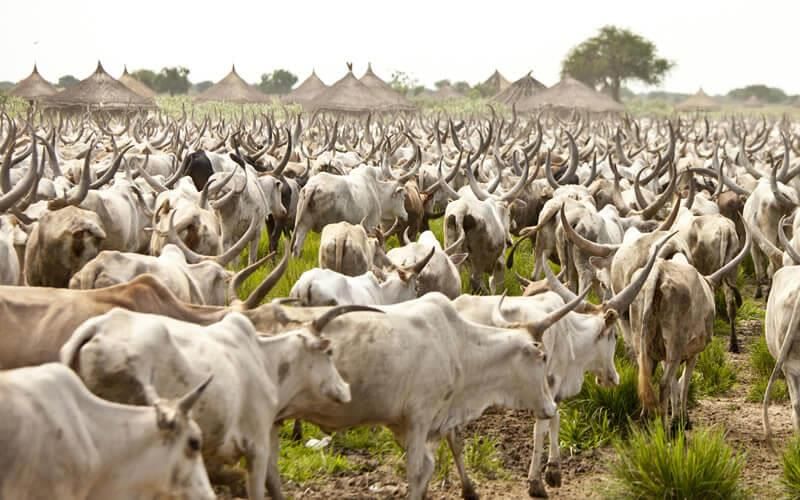Soil Erosion Class 5 Notes EVS
Soil Erosion
Removal of the top fertile layer of the soil due to weathering is called soil erosion. Heavy rain fall and wind are the cause of soil erosion.
Soil Erosion by Wind
Particles from the top layer of the soil are lifted up by the Wind to carry it to some other place. This type of erosion of soil generally occurs in arid regions with little vegetation or no vegetation.
Soil Erosion by Rain and Running Water
Due to cutting down of trees and less vegetation, the top fertile layer of the soil is exposed and hence it can be easily carried away with flowing water and rain water.
 Fig: Soil erosion by rain
Fig: Soil erosion by rain
Soil Erosion by Overgrazing of Animals
Overgrazing on the same piece of land without giving time for the growth of new plants erode the top fertile layer and make it barren or desert.
 Fig: Soil erosion due to Overgazing
Fig: Soil erosion due to Overgazing
Cutting Down of Trees
Roots of trees hold the top fertile layer of the soil. Now a day in order to meet the demands of large scale industries and huge population, trees are being cut down at high rate. Deforestation exposes the top layer of the soil to the environmental factors such as wind, water, rain etc.
 Fig: Deforestation
Fig: Deforestation
Deforestation causes desertification
Deep Ploughing
Deep ploughing throws the soil to one side and then to other side, when the tractor machine returns to the same part of land. This process loosen the top layer of the soil which can be easily carried by the agents like flowing water, rain, wind etc.
 Fig: Deep Ploughing
Fig: Deep Ploughing
Deep ploughing makes the soil very loose
How to Prevent Soil Erosion:
1. Prevent Soil from Erosion by Afforestation

Fig: Afforestation
We can reduce soil erosion by planting trees as the roots of the plants hold the top fertile layer of the soil firmly.
Prevent Soil from Erosion by Making Dam and Embankment
Dam and embankment are the water storing and holding body. As result flow of water can be controlled, there by checking the soil erosion.
Preventing Soil Erosion by Terrace Farming

Fig: Terrace farming
Terraces are built in hilly areas by cutting down steps on the slopes. This type of practices reduces the speed of flowing water through the mountains and hence stops removal of top layer of the soil.
Preventing Soil Erosion by Strips Farming
Grasses are allowed to grow in the strips along with the crops to decrease the intensity of wind.
 Fig: Strip ploughing
Fig: Strip ploughing
Contour ploughing
Ploughing is done on the contour lining to reduce the speed of flowing water down the slopes.
 Fig: Contour Ploughing
Fig: Contour Ploughing
Preventing Overgrazing
We cannot stop the overgrazing of wild animals which causes the soil erosion. But the erosion of soil can be stopped from overgrazing of animals at a piece of land by taking preventive measures. For example, making boundary around the piece of land, growing crops on the piece of land. Therefore, by restricted grazing, soil erosion can be prevented.
Commonly Asked Questions:
1. Wind causes the soil erosion. Which one of the following types of soil can be easily transported by wind?
(a) Clayey soil
(b) Sandy soil
(c) Alluvial soil
(d) Residual soil
(e) None of these
Answer: (b)
Explanation
Particles of sandy soil are foosely packed and hence can move along with the wind. Residual soil remains at the place of its formation. Alluvial soil is made up of smooth particles and hence carried away with water. Therefore, option (b) is correct and rest of the options is incorrect.
2. Which one of the following is a component of soil?
(a) Tiny particles of rocks
(b) Dead organic matter
(c) Water
(d) All of these
(e) None of these
Answer: (d)
Explanation
Soil is composed of tiny particles of rocks, dead organic matter, air and water. Therefore, option (d) is correct and rest of the options is incorrect.
|
10 docs|23 tests
|
FAQs on Soil Erosion Class 5 Notes EVS
| 1. What is soil erosion? |  |
| 2. How does soil erosion affect agriculture? |  |
| 3. What are the main causes of soil erosion? |  |
| 4. How can soil erosion be prevented? |  |
| 5. What are the long-term consequences of soil erosion? |  |

|
Explore Courses for Class 5 exam
|

|

















